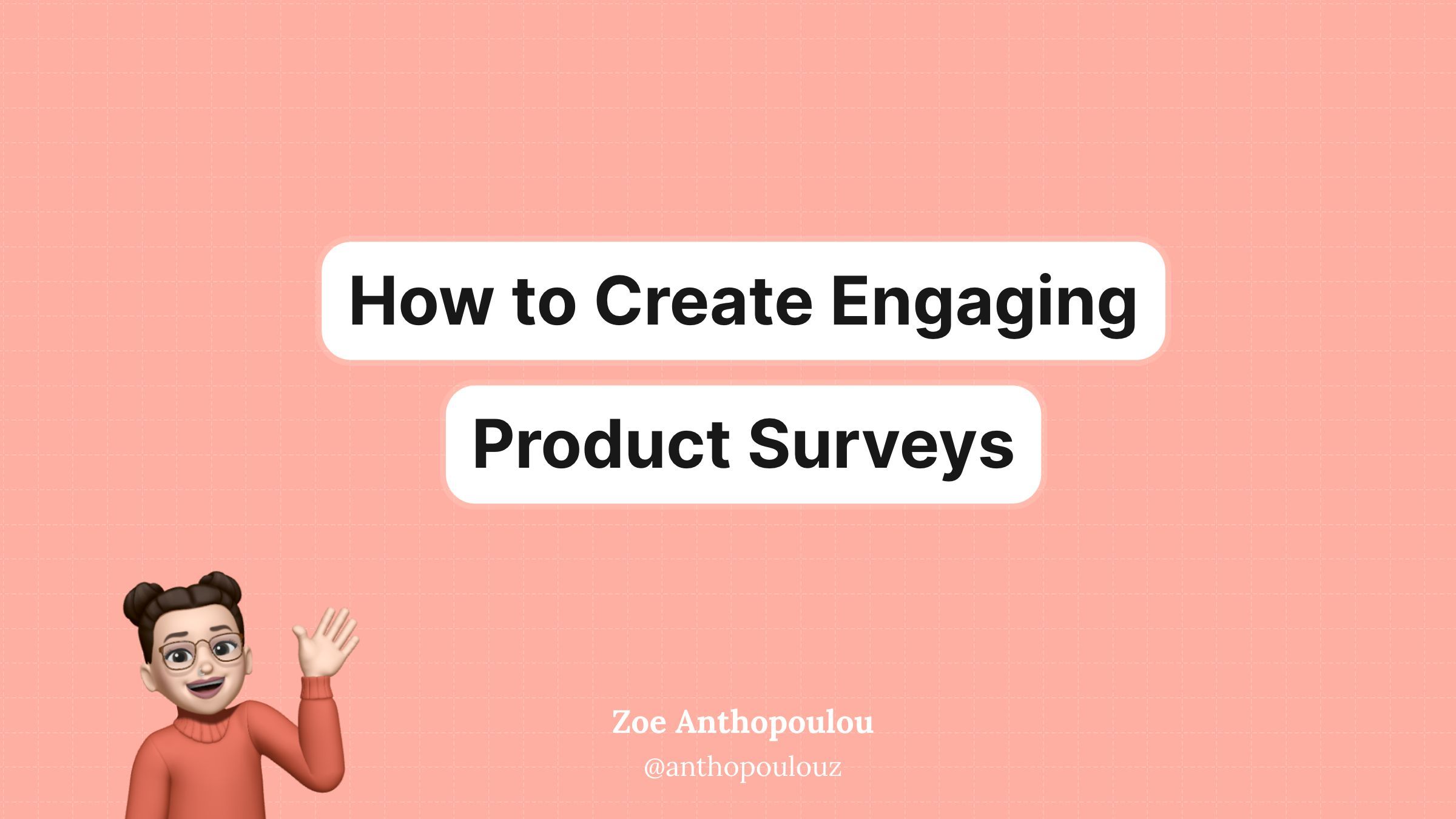How to Create Engaging Product Surveys

Zoe Anthopoulou
27 Jun 2024

Did you know that it’s most likely for a frustrated or angry customer to respond to a survey?
It’s commonly known that people are generally more motivated to respond to surveys when they have had a negative experience rather than a positive one. Frustrated or angry customers are more likely to take the time to share their dissatisfaction, seeking resolution or simply wanting to vent their frustrations.
On the other hand, satisfied customers often feel no pressing need to provide feedback unless they had an exceptionally positive experience.
The reason behind this is that most people find surveys as as tedious, time-consuming, and often irrelevant. So, if you want to implement surveys for your product or services, it as a necessary step to transform this necessary evil into an engaging, insightful tool that your users actually want to complete.
But how can you turn something so boring into something engaging? 🤔
Let’s split this into two parts: how to structure your survey and then your survey’s questions.
1️⃣ SURVEY
- Don’t let your survey get too long: Users are more likely to drop off a longer survey, and never complete it. So it’s important to keep your surveys simple and concise. Try by limiting your surveys to less than ten questions.
- Hook your users from the start: Your users will be more willing to engage with your survey if they feel it gives them value. Sharing a survey with your users asking them to “take a survey to help you” probably won’t get you a lot of responses. Instead, you can let your users know that this is all about them and their responses will be used to make their experience the best possible.
- Use media to spruce it up: Adding images, videos, or even GIFs can make a survey more fun and interactive for your users. Media can provide some visual context to the users, induce their feelings and ultimately, increase engagement with the survey.
- Consider a survey incentive: Incentives are like a thank you gift to the respondents for taking the time to help you. They can boost every survey’s response rates, but they are a must-have if you plan on asking your users to fill in a longer survey. But don’t worry, you don’t need to break the bank for this. An incentive could be anything your users may find valuable; a coupon code, an extended trial or even an e-book. It’s up to you to find out what it is that will prompt more users to take your survey.
- Remove of hide the Skip option: This may sound easy but it can really have an effect on your survey's response rate. If you have a Skip button available for the user to click right away, of course they are going to take the easy way out. Consider hiding or removing the skip option altogether, to get as many responses possible.
2️⃣ QUESTIONS
- Personalisation goes a long way: Not all your users are the same, so they should not have to respond to the same questions either. Use your cohorts to find out which questions each user should respond to, so it’s meaningful for both them and you. You can differentiate the questions based on a user’s industry and goals, but more importantly based on their product usage. Which features are they using? How often? Having to respond to questions relevant to their experience, users will find themselves more engaged with the survey, rather than lost in a list of questions they don’t know how to respond to.
- Use survey logic to keep context: Using survey logic you can define different question paths for each user, based on their responses. This can make your questions more relevant for the respondents, as their survey experience will imitate a real conversation. For example, if a user responds that would not share your product with their friends, your next question should not be “What do you like about the product?” but “What is it that you dislike on the product?”. It’s all about keeping the questions relevant to the actual user.
- Limit your open-ended questions: While open-ended questions can help you gather deeper and more thorough feedback from your users, they also may appear daunting to them. Responding to open-ended questions takes much longer, as the user needs to think about their response and also type it in. A good rule of thumb is to only include 1-2 open-ended questions, usually as a follow-up after a close-ended one.
- Don’t be a robot; use familiar language: This may look like a no-brainer, but people usually fall into the trap of using formalities, jargon and flowery language for their surveys. If respondents cannot understand the questions of your survey, they may drop off or worse, choose a response option by chance. So, it’s necessary to keep your questions simple, and in familiar language, to make sure that your users will not feel confused or unsure while taking the survey.
By applying these strategies, you can create surveys that are not only more engaging but also more likely to be completed. Engaged respondents provide higher quality data, which can lead to better insights and more informed business decisions. In turn, this can help improve your products, services, and overall customer satisfaction.
